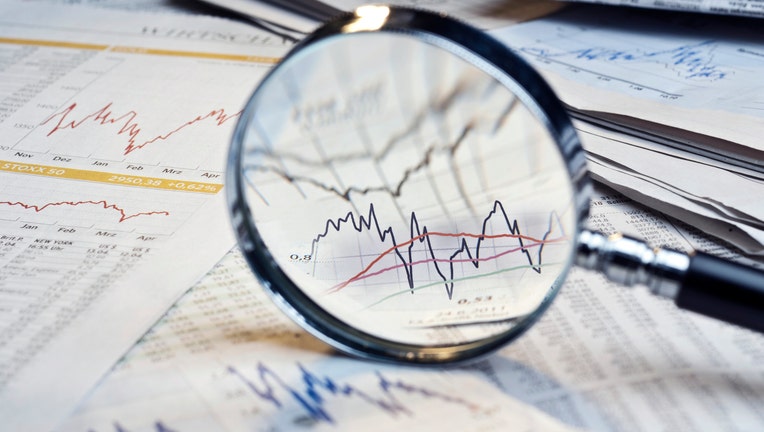Interest rate on your high-yield savings account dropping? Don’t panic!

High-yield savings accounts pay much higher interest than traditional savings accounts. But even though rates are low, your money won’t lose much value overtime. (iStock)
In response to the COVID-19 pandemic, the Federal Reserve has dropped interest rates to new record lows. Right now, interest rates on standard savings accounts are just 0.05%. While this is good news for homeowners who want to refinance their mortgage, it’s another thing entirely for anyone thinking about stashing a part of their hard-earned cash in a savings account.
High-yield savings accounts have fared a bit better, with interest rates at between 0.65% and 1%. But if you’re wondering if high-yield savings accounts are even worth it, you’re not alone.
Visit Credible today to explore their high-yield savings account options and compare APY rates.
What are high-yield savings accounts?
With a high-yield savings account, your money earns a higher rate of interest, or annual percentage yield (APY), than a standard savings account. Rates vary from one bank to the next, but usually by only a tenth or less of a percentage point. Unlike traditional savings accounts, not all banks or credit unions offer high-yield accounts. Online banks seem to provide the best rates.
Check out all the ways you can maximize your earnings with these high-yield savings options on the Credible marketplace.
High-yield savings accounts compound interest, which means you earn interest on the interest you’ve already earned. These accounts also allow you to make more money on your cash savings. For example, you put $2,000 in a high-yield savings account with an APY of 1.2%. After one year, if you don’t touch the money in your account, you’ll earn about $24.00. If you put your money in a standard savings account earning about 0.20%, you would only make about $4.00.
Neither amount is worth shouting about, but $24.00 is a lot better than $4.00.
HERE'S HOW MUCH A HIGH-YIELD SAVINGS ACCOUNT PAYS
How the Federal Reserve’s rate cuts affect savings accounts
As the coronavirus became a pandemic, the Federal Reserve cut its benchmark interest rate to between 0.0% and 0.25%. This was done to jump-start the economy and entice borrowers to start spending. The central bank also purchased billions of dollars in bonds, which pushed rates even lower. Not good news for savings accounts. But even before COVID, interest-bearing savings accounts weren’t that great.
Even so, your money is FDIC-insured, and overtime, a high-yield savings account won’t lose much value. For instance, if inflation is 1.00% and your account pays 0.02%, you’ll lose 0.98% to inflation. However, right now, a high-yield saving account may pay as much as 0.80% APY, so you’ll only lose 0.20% to inflation.
To find the right savings account for your financial goals, visit Credible right now!
HOW ARE HIGH-YIELD SAVINGS ACCOUNT DIFFERENT FROM TRADITIONAL?
What to do if rates continue to drop
The short answer? Do nothing. Even with all-time low interest rates, don’t move your money out of your high-yield savings account just yet. It is still one of the best places to keep your cash primarily because rates on high-yield accounts -- even when they are falling -- are still better than traditional savings accounts.
Credible can help ensure you find a high-yield savings account that's right for you. Head to their website to learn more about high-yield savings accounts and how much you could save on interest.
For example, if you put $10,000 in a high-yield savings account, you might earn as much as 0.80% APY on your money, or 8 times the national average. That means that at the end of one year if the interest is compounded monthly and you make no other deposits or withdrawals, you’ll earn $80. That may not sound like much, but when you compare rates on a standard savings account, it’s not so bad.
Deposit the same $10,000 in a standard savings account, with an APY of 0.05% (the current national average reported by the FDIC), and you’ll earn $5.00 at the end of one year if interest is compounded monthly and you make no other deposits or withdrawals. Besides, even if rates are low right now, that doesn’t change the fact you need emergency savings.
SHOULD I PUT MONEY IN A HIGH-YIELD SAVINGS ACCOUNT OVER A CD OR MONEY MARKET?
Does it make sense to change banks for higher rates?
You may think if your bank is paying 0.65% APY on your high-yield savings account and the bank down the road or online is paying 0.75% APY, that changing accounts makes sense. But if you consider the time it takes to open a new account, change your direct deposit information, and move your money, you may want to think twice. In one year, the difference you’d earn on your $10,000 would be about $10.00.
You may even consider an interest-bearing checking account, a CD, or money market, but rates aren’t much different. If rates drop on your high-yield savings account, the best thing to do is nothing. Rates on savings accounts go up and down, and sometimes the headache of opening a new account or moving accounts isn’t worth the few dollars you’ll save
Find the best savings account for you at Credible, and qualify today.
OPEN A HIGH-YIELD SAVINGS ACCOUNT TO EARN MORE INTEREST ON YOUR MONEY

